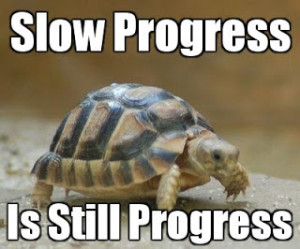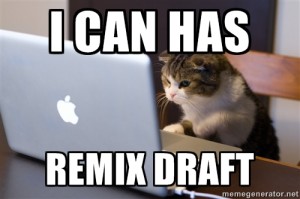 Today’s reading is about moving to the organization and planning stage for your projects. I am not requiring any particular organization system, so you can use whatever works best for you. Don’t get hung up on this step. The goal is to produce a very rough outline of the project from beginning to end. Sketching out your plans is more important than the specific way you choose to sketch them out.
Today’s reading is about moving to the organization and planning stage for your projects. I am not requiring any particular organization system, so you can use whatever works best for you. Don’t get hung up on this step. The goal is to produce a very rough outline of the project from beginning to end. Sketching out your plans is more important than the specific way you choose to sketch them out.
Goal for the Week
At this point, your topic, genre, and design should be solid. If you are thinking of changing something, put your name on the board, and I’ll come talk to you.
By the end of the week, you should have a strong outline of what you plan to include in your project. You don’t need to have all the piece created, and you may even change your outline as time goes on, but I would like to see everyone with a firm idea of the elements and the order they will appear in by the end of class on Thursday. If you are having particular trouble organizing your ideas, again, put your name on the board, and I’ll come talk to you.
Mock-up Tools
Mock-ups are usually used for websites, projects that are “static” (like posters or brochures), and texts that are primarily linguistic or visual in nature. Wireframes (if you’re familiar with the term) fall into this category. Be sure to use the Mock-up guidelines on p. 95 of Writer/Designer to guide your process.
You could use one of the tools that was reviewed in class: Froont (Christopher’s review) or Codepen (Jay’s review). You can also use a tool specifically designed for mock-ups like Mockflow, Invision (30-day free trial), Frame Box, or Pencil Project.
You could try a flowcharting tool (like Gliffy or Lucidchart) or mindmapping tool (like bubbl.us or Coggle).
Storyboarding Tools
Storyboarding is usually used for projects that move through a series of pieces, places, or points in time—like a video, comic book, or graphic novel. Be sure to use the storyboard guidelines on p. 97–98 of Writer/Designer to guide your process.
Storyboarding is, essentially, visual outlining your text, so you may be happy with creating a simple outline in Google Docs. For online tools I’ve made, I created storyboards with PowerPoint, because it was simple and I had a copy. If you do go this route, Google Slides would work too.
If you want to try something specifically created for storyboarding, take at look at these resources for creating and organizing storyboards:
In-Class Writing and Homework
- Today is the close of the course request period for Fall 2014. If you haven’t made your requests, please take time to do so.
- Check out the Awards for Professional Writing Majors & Minors. Deadline is April 18.
- Be sure to write and publish a blog post for today that talks about what you have accomplished since your last post and why you did what you did.
- Keep making progress on your project. Once you have your outline in place, you should begin finding or making the assets you will use in the project. Read Chapter 7 of Writer/Designer for details on moving from mock-ups/storyboards to a rough cut.
Last updated on 31st March, 2014, 4:51 PM
 The final exam for this course will work as extra credit. I'll share more details on how it will count during the last week of class. For now, you need to know the following details:
The final exam for this course will work as extra credit. I'll share more details on how it will count during the last week of class. For now, you need to know the following details:



